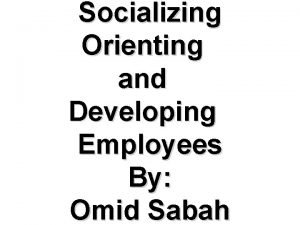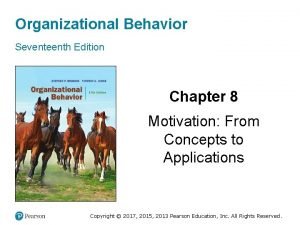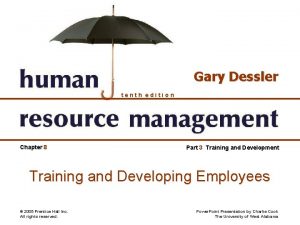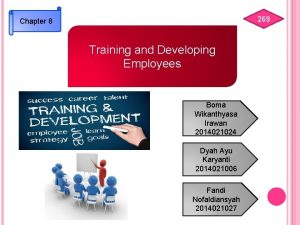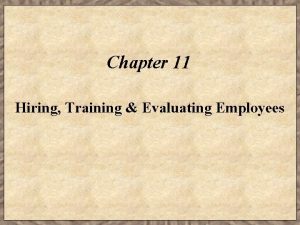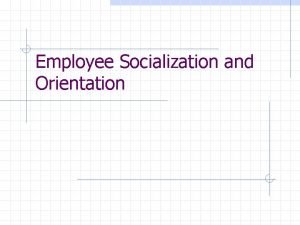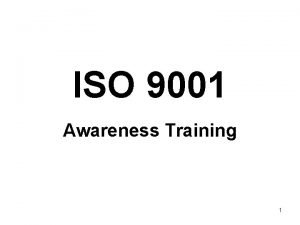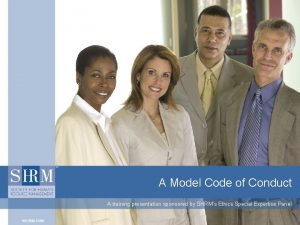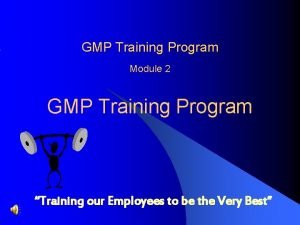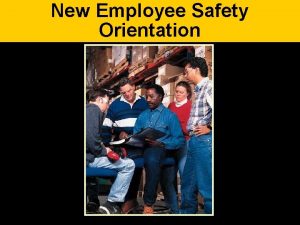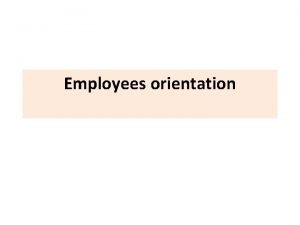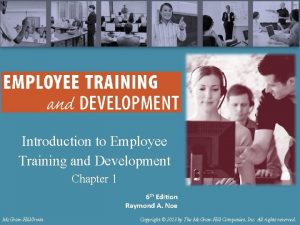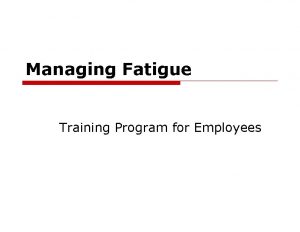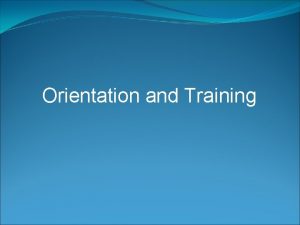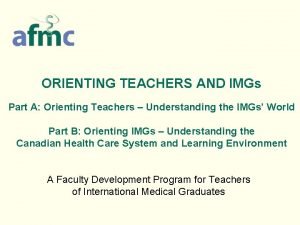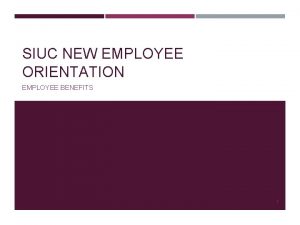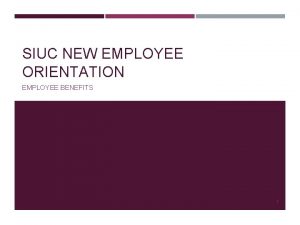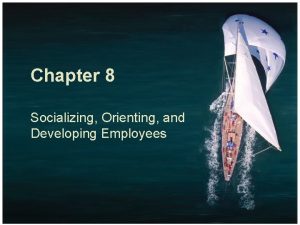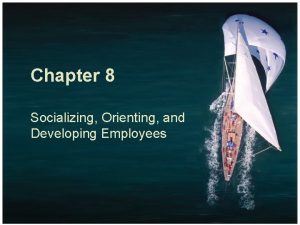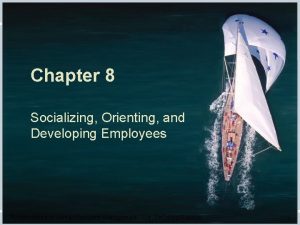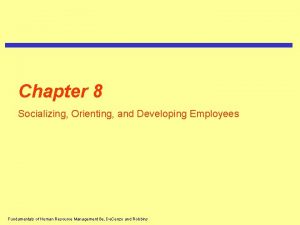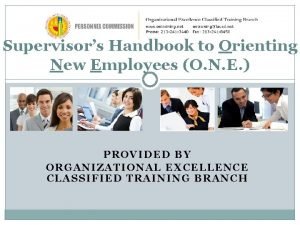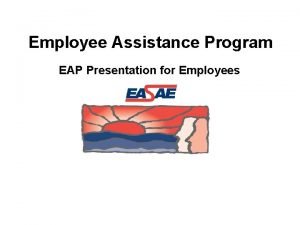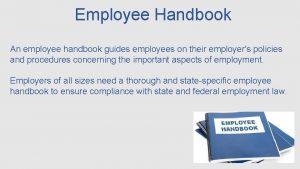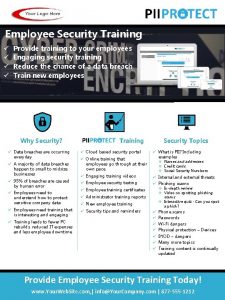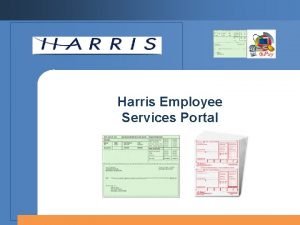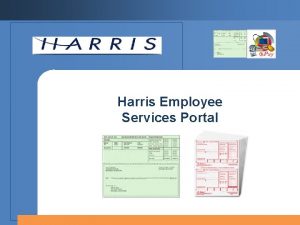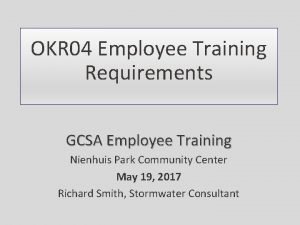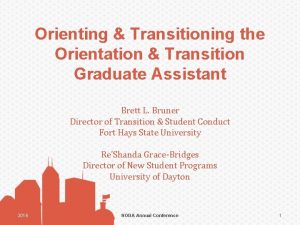Orientation and Training Orienting Employees Employee orientation A

























- Slides: 25

Orientation and Training

Orienting Employees Employee orientation A procedure for providing new employees with basic background information about the firm. Orientation content Information on employee benefits Personnel policies The daily routine Company organization and operations Safety measures and regulations Facilities tour

Orienting Employees (cont’d) A successful orientation should accomplish four things for new employees: Make them feel welcome and at ease. Help them understand the organization in a broad sense. Make clear to them what is expected in terms of work and behavior. Help them begin the process of becoming socialized into the firm’s ways of acting and doing things.

Training Defined o Training is the systematic process of altering employee behavior in a way that will achieve organizational goals n It should be related to present job skills and abilities n It helps employees master the specific skills and abilities needed to be successful

Differences between Training, Education & Development Training is short term, task oriented and targeted on achieving a change of attitude, skills and knowledge in a specific area. It is usually job related. Education is a lifetime investment. It tends to be initiated by a person in the area of his/her interest(Today) Development is a long term investment in human resources(tomorrow).

The Goal of the training The goal of training is for employees to master the knowledge, skills and behaviors emphasized in training programs and to apply them to their day-to-day activities.

How training is a strategic? Training is strategic to the extent that it helps achieve the organization’s strategic plan or business strategy.

Linking Organizational Strategies and Training

Developing Strategic Training Plans A good training plan deals with the following questions: Is there really a need for the training? Who needs to be trained? Who will do the training? What form will the training take? How will knowledge be transferred to the job? How will the training be evaluated?

Sources of the information in the Training Need Assessment Organizational Analyses Job/Task Analyses Individual Analyses

Levels of Needs Assessment

Performance Consulting

Establishing Training Objectives and Priorities Gap Analysis The distance between where an organization is with its employee capabilities and where it needs to be. Types of Training Objectives Knowledge: Impart cognitive information and details to trainees. Skill: Develop behavior changes in how job and tasks are performed. Attitude: Create interest and awareness of the training importance.

Internal Training Informal Training that occurs through interactions and feedback among employees. On-the-Job Training (OJT) Based on a guided form of training known as job instruction training (JIT) Problems with OJT Poorly-qualified or indifferent trainers Disruption of regular work Bad or incorrect habits are passed on

Stages for On-the-Job Training (OJT) Figure 9– 6

On The Job Training Methods Coaching Mentoring Job rotation Apprenticeship training Committee assignments

Off The Job Training Methods Case Study Role playing Lecture method Conference or discussion method Programmed instruction

Case Method o The case method uses a written description of a real decision-making situation n Managers are asked to study the case in order to: o o o Identify the problems Analyze the problems Propose solutions Choose the best solution Implement it o More learning takes place if there is interaction with the instructor

Role Playing n Each person is assigned a role in a situation and is asked to react to other players’ role-playing n The player is asked to react to the stimuli as that person would n Players are provided with background information on the situation and the players n A script is usually provided o The success of this method depends on the ability of the players to play the assigned roles believably n Role-playing can help a manager become more aware of, and more sensitive to, the feelings of others

Training Delivery: Considerations Nature of training Subject matter Number of trainees Individual vs. team Self-paced vs. guided Training resources Costs Geographic locations Time allotted Completion timeline

Evaluation Integral part of overall training program Provides feedback on effectiveness of training program Evaluation criteria should be established in tandem with and parallel to training objectives

Continued Cost-Benefit Analyses A comparison of costs and benefits associated with organizational training efforts Measurement difficult. of both the costs and the benefits may be Return on Investment (ROI) Analysis Benchmarking Comparison of internal training with training done in other organizations

Learning: The Focus of Training Learner Readiness Ability to learn Learners must possess basic skills. Motivation to learn Learners must desire and value training. Self-efficacy Learners must believe that they can successfully learn the training content.

Learning Styles Adult Learning Principles Have need to know why they are learning something. Have need to be self-directed. Bring more work-related experiences into the process. Employ a problem-solving approach in the experience. Are motivated by both extrinsic and intrinsic factors.

END
 Socializing orienting and developing employees
Socializing orienting and developing employees How can employee involvement measures motivate employees
How can employee involvement measures motivate employees Employee attitudes and employee performance
Employee attitudes and employee performance Ati nurse logic
Ati nurse logic Chapter 8 training and developing employees
Chapter 8 training and developing employees Chapter 8 training and developing employees
Chapter 8 training and developing employees The process of selecting training and evaluating employees
The process of selecting training and evaluating employees Feldman's model of organizational socialization
Feldman's model of organizational socialization Personal grooming for teachers ppt
Personal grooming for teachers ppt Iso 9001 awareness
Iso 9001 awareness Code of conduct training for employees ppt
Code of conduct training for employees ppt Gmp training for employees
Gmp training for employees Training staff development
Training staff development Employee safety orientation quiz answers
Employee safety orientation quiz answers Nih new employee orientation
Nih new employee orientation Florida state university orientation
Florida state university orientation New employee orientation
New employee orientation Introduction to employee training and development
Introduction to employee training and development Ethnocentric orientation and polycentric orientation
Ethnocentric orientation and polycentric orientation Employee fatigue training
Employee fatigue training Employee training methods
Employee training methods Motivating and satisfying employees and teams
Motivating and satisfying employees and teams Motivating and satisfying employees and teams
Motivating and satisfying employees and teams Is the individual internal process that energizes directs
Is the individual internal process that energizes directs Motivating and satisfying employees and teams
Motivating and satisfying employees and teams Motivating and satisfying employees and teams
Motivating and satisfying employees and teams
